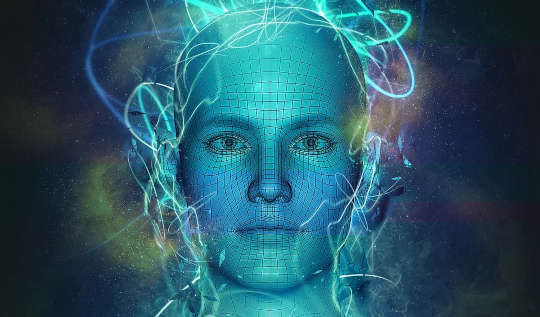
"When psychologists talk about why humans have the ability to imagine the future, usually it's so we can decide what to do, plan, make decisions. But a critical function is the evaluative function; it's not just about coming up with a possibility but also evaluating it as good or bad," says Joseph Kable.
Two sub-networks are at work in the brain when we imagine the future: one focused on creating the new event and another on evaluating whether that event is positive or negative, according to new research
In quiet moments, the brain likes to wander—to the events of tomorrow, an unpaid bill, an upcoming vacation.
Despite little external stimulation in these instances, a part of the brain called the default mode network (DMN) is hard at work.
“These regions seem to be active when people aren’t asked to do anything in particular, as opposed to being asked to do something cognitively,” says Joseph Kable, a professor in the psychology department at the University of Pennsylvania.
Though the field has long suspected that this neural network plays a role in imagining the future, precisely how it works hadn’t been fully understood. Now, research from Kable and two former graduate students in his lab, Trishala Parthasarathi, associate director of scientific services at OrtleyBio, and Sangil Lee, a postdoc at the University of California, Berkeley, sheds light on the matter.
In a paper in the Journal of Neuroscience, the researchers discovered that, when it comes to imagining the future, the default mode network actually splits into two complementary parts. One helps create and predict the imagined event, what the researchers call the “constructive” function. The other assesses whether that newly constructed event is positive or negative, what they call the “evaluative” function.
“It’s a neat division,” says Kable. “When psychologists talk about why humans have the ability to imagine the future, usually it’s so we can decide what to do, plan, make decisions. But a critical function is the evaluative function; it’s not just about coming up with a possibility but also evaluating it as good or bad.”
The DMN itself includes the ventromedial prefrontal cortex, posterior cingulate cortex, and regions in the medial temporal and parietal lobes, such as the hippocampus. It’s aptly named, Kable says. “When you put people into a brain scanner and ask them to not do anything, to just sit there, these are the brain regions that seem to be active,” he says.
Previous research had revealed which areas make up the DMN and that constructing and evaluating imagined events activates different components. Kable wanted to test that idea further, to better pinpoint the implicated regions and what’s happening in each.
To do so, he and his team created a study in which 13 females and 11 males received prompts while in a functional magnetic resonance imaging (fMRI) machine. Participants had seven seconds to read one of 32 cues such as, “Imagine you’re sitting on a warm beach on a tropical island,” or “Imagine you win the lottery next year.” They then had 12 seconds to think about the scenario, followed by 14 seconds to rate vividness and valence.
“Vividness is the degree to which the image that comes to mind has a lot of details and how much those details subjectively pop as opposed to being vague,” Kable says. “Valence is an emotional evaluation. How positive or negative is the event? Is this something you want to have happen or not?”
Participants went through the process four times. Each time, the researchers watched brain activity from the fMRI. The work confirmed two sub-networks at play.
“One network, which we’ll call the dorsal default mode network, was influenced by valence. In other words, it was more active for positive events than for negative events, but it was not influenced at all by vividness. It seems to be involved in the evaluative function,” Kable says.
The other sub-network, the ventral default mode network, was more active for highly vivid events than for events with no detail. “But it wasn’t influenced by valence,” he says. “It was equally active for both positive and negative events, showing that network really is involved in the construction piece of imagination.”
According to Kable, the findings offer a first step toward understanding the basis of imaginative abilities. This research asked participants to evaluate the positivity or negativity of an imagined event, but more complex assessments—moving beyond the simple good-versus-bad dimension, for instance—might offer further clues about this neural process.
That kind of analysis will likely comprise future work for the Kable lab, which has already begun using these findings to parse why people don’t value future outcomes as much as immediate outcomes.
“One theory is that the future isn’t as vivid, isn’t as tangible and detailed and concrete as something right in front of your face,” he says. “We’ve started to use our identification of the sub-network involved in construction to ask the question, how active is this network when people are thinking about future outcomes compared to the same outcome in the present.”
And although the research was completed before COVID-19, Kable sees pandemic-related implications for these findings.
“Before the pandemic hit, if you had described what someone’s life was going to be like to them—you’re going to work from home and wear a mask every time you go outside and not engage in any social contact—it would blow their mind. And yet, once we have the actual experiences, it’s no longer so strange. For me, this demonstrates that we still have far to go in understanding our imaginative capabilities.”
About the Authors
Funding for this research came from the National Institute of Drug Abuse of the National Institutes of Health.

Related Books:
Atomic Habits: An Easy & Proven Way to Build Good Habits & Break Bad Ones
by James Clear
Atomic Habits provides practical advice for developing good habits and breaking bad ones, based on scientific research on behavior change.
Click for more info or to order
The Four Tendencies: The Indispensable Personality Profiles That Reveal How to Make Your Life Better (and Other People's Lives Better, Too)
by Gretchen Rubin
The Four Tendencies identifies four personality types and explains how understanding your own tendencies can help you improve your relationships, work habits, and overall happiness.
Click for more info or to order
Think Again: The Power of Knowing What You Don't Know
by Adam Grant
Think Again explores how people can change their minds and attitudes, and offers strategies for improving critical thinking and decision making.
Click for more info or to order
The Body Keeps the Score: Brain, Mind, and Body in the Healing of Trauma
by Bessel van der Kolk
The Body Keeps the Score discusses the connection between trauma and physical health, and offers insights into how trauma can be treated and healed.
Click for more info or to order
The Psychology of Money: Timeless lessons on wealth, greed, and happiness
by Morgan Housel
The Psychology of Money examines the ways in which our attitudes and behaviors around money can shape our financial success and overall well-being.




















